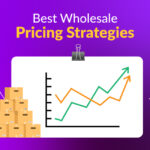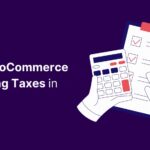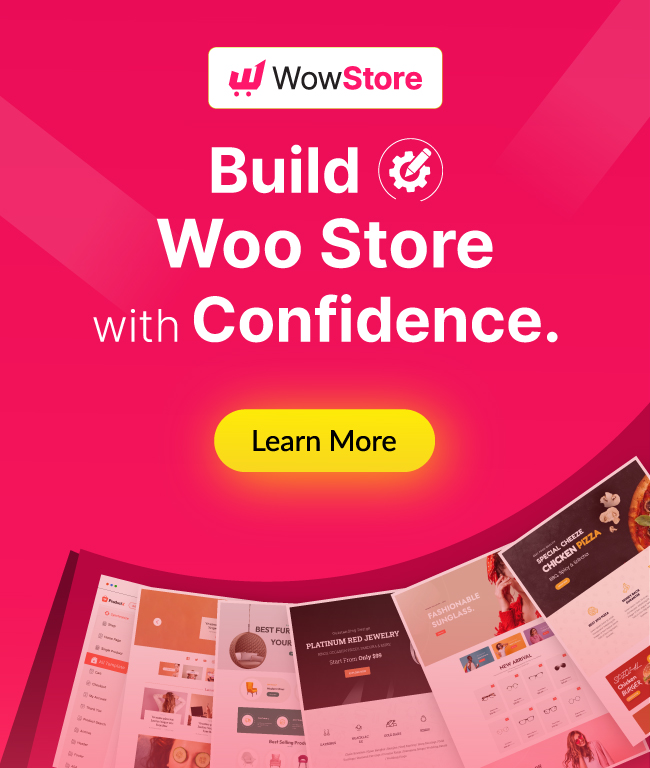Pricing is a vital aspect of any wholesale business, but it can also be one of the most challenging. Striking the perfect balance between profit margins and customer satisfaction is a delicate art.
Set the price too high, and you risk driving away potential buyers; set it too low, and you may undermine your product’s value and profitability. As a wholesale business owner, finding the right pricing strategy is crucial for long-term success.
In this comprehensive guide, we will delve deep into the world of wholesale pricing and its determining factors and provide you with all the information needed to calculate your wholesale prices accurately.
Whether you’re just starting in the business or looking to improve your pricing strategy for new products, this guide will equip you with the knowledge and approach necessary to make informed decisions and achieve optimal results. So, let’s get ready to master the art of wholesale pricing.
Things to Consider While Determining Wholesale Price
Analyze Market Conditions and Competitor Pricing
Determining the right wholesale price requires a comprehensive understanding of market conditions and competitor pricing. You may have to begin by thoroughly researching your target market.
Understand the demand for your product, the preferences of your potential customers, and the trends that influence their purchasing decisions. This insight will guide your pricing strategy.
For example, let’s consider the smartphone industry. Before launching a new model, smartphone manufacturers thoroughly analyze market conditions and evaluate their competitors’ pricing strategies. They assess factors such as consumer demand, feature offerings, and pricing trends in order to determine an optimal wholesale price for their product.
If your analysis reveals that similar smartphones are priced higher due to their premium features, you might find an opportunity to enter the market with competitive pricing. Your research could show that while other brands charge $550 for a similar smartphone, you could offer yours at $450 without compromising on quality.
Find Out Your Fixed and Variable Costs
Fixed costs can disrupt wholesale pricing strategies, encompassing consistent expenses like rent, insurance, and daily office needs. Some team members also fall under this category, regardless of sales volume.
Determining fixed costs involves identifying steady expenses even if sales halve the next month. Simplify this with guides on fixed cost calculation.
Even seemingly variable delivery costs due to factors like van leasing and driver salaries, can be fixed. A local solution, like an in-house fleet, can shape this.
Exploring fixed costs can uncover margin-boosting opportunities.
Businesses like Jacobson Floral successfully optimized their operations by converting local deliveries from fixed to variable costs. This strategic shift allowed them to adapt their expenses based on actual demand, ultimately resulting in a significant cost savings of 25%.
By mastering fixed costs and seeking intelligent solutions, your wholesale pricing can stand firm, staying competitive and profitable amidst market fluctuations.
As for variable cost, calculate the cost of materials for each product, considering all expenses related to manufacturing, storing, distributing, and customer support. This includes labor costs and your time.
Variable costs are more favorable than fixed costs since you only incur them as needed.
Calculate Your Total Production Costs of Goods
When determining the price for your wholesale goods, it’s vital to factor in the Cost of Goods Manufactured (COGM). This takes into account the expenses involved in producing or obtaining your products, including labor, materials, and operational costs.
The COGM can be calculated using the formula:
Total Material Cost + Total Labor Cost + Additional Costs and Overhead = Cost of Goods Manufactured
In simpler terms, you’re summing up all your production costs, including materials, labor, and other overhead expenses like rent and utilities.
Let’s illustrate this with a more straightforward analogy: think of baking a cake where you add up the cost of ingredients, the time spent baking, and the electricity used.
For instance, if we consider:
Total Material Cost: $100,000
Total Labor Cost: $50,000
Additional Costs and Overhead: $30,000
Using the formula, your COGM will be:
$100,000 + $50,000 + $30,000 = $180,000
Now, the key here is that your wholesale product’s selling price should exceed the COGM to ensure profitability. This can be a challenge if your COGM is high.
To address this, explore ways to streamline your business operations and reduce COGM. For example, you can selectively offer specific products for wholesale, focusing on those with lower production costs. This strategic approach helps maintain profitability while offering competitive wholesale pricing.
Determine Your Customer Acquisition Costs
Customer acquisition costs, often overlooked, play a crucial role in wholesale pricing. As business owners, it’s essential to factor them into your pricing strategy. New customers bring revenue, but understanding the costs involved is vital – both in terms of money and your valuable time.
Time is a precious resource for business owners, and it’s also a form of investment. Additionally, marketing expenditures, such as advertising and event attendance, contribute to these costs.
Once you’ve grasped the actual cost of acquiring a new customer, you can target the most valuable customers for your business. This focused approach can lead to higher wholesale sales.
Moreover, consider co-marketing partnerships to minimize marketing expenses and maximize mutual benefits. This strategic perspective enhances both your profitability and customer relationships.
Set Your Profit Margin and Wholesale Price
Setting the wholesale price with a profit margin is a critical step in pricing your products for maximum profitability.
Many wholesalers aim for profit margins ranging from 30% to 50%. A typical starting point is to double the cost of goods, ensuring at least a 50% profit margin.
For instance, let’s consider a clothing wholesaler. If it costs $50 to produce a particular garment, doubling the cost of goods would result in a wholesale price of $100. This approach helps maintain healthy profit margins while accounting for production, storage, and distribution expenses.
However, it is essential to factor in the retail price when determining your wholesale prices. Retailers typically apply their markup percentage when selling their products to end consumers.
So, understanding the market dynamics and considering the final retail price can help strike the right balance between setting an attractive wholesale price and ensuring profitability for both wholesalers and retailers alike.
Also Read: Difference Between Wholesale Price vs Retail Price
Different Methods For Calculating Wholesale Price
Wholesale pricing strategies vary among businesses, with factors such as market research findings and business goals influencing the chosen approach. Here are some pricing methods you can consider implementing in your wholesale business.
But before that, if you want to take your wholesale business online, you may want to consider WholesaleX, a WooCommerce B2B plugin – making your online e-commerce journey a breeze. Here’s a quick video to help you learn about the features:
Now, let’s get back to the pricing methods:
Absorption pricing
Cost-based pricing, also known as cost-plus pricing, is a straightforward strategy where you incorporate all your manufacturing or procurement costs into the price of your product. By adding a markup on top of these costs, you ensure consistent returns as long as the costs remain stable.
However, one drawback is that if the costs change, you may need to adjust your wholesale price accordingly. Additionally, this pricing strategy does not consider external factors like competition or demand patterns. Despite its simplicity and consistency, it may not fully account for market conditions.
Differentiated pricing
This pricing is a flexible demand-based strategy that allows you to adjust your prices according to different situations. You can set a price above the average market figures in low competition scenarios.
Conversely, if your goal is to generate quick sales, you can choose to set a price below the market average. Another option is offering reduced pricing for customers purchasing higher quantities. While this strategy provides adaptability, it requires agility and the ability to make quick changes.
Value-based pricing
Value-based pricing focuses on determining what customers are willing to pay for a product, with the aim of setting higher prices. If research indicates that customers consider your products luxurious or high-value, you can establish a premium price.
This strategy leverages the willingness of customers to pay more for products they perceive as valuable. However, it is essential to note that setting high prices may limit your market size.
Competitive/market-based pricing
Competitor-based pricing uses competitor pricing as a reference point. You can either match your competitors’ prices or set lower prices to attract more wholesale buyers. This strategy is most effective in industries with similar products, like smartphones.
By effectively managing costs and selling at a lower price, you have the potential for high sales and profits. However, this strategy may be challenging for smaller wholesalers or those who are new to the market.
Bundle pricing
Have you ever noticed this pricing method in promos or stores? It offers two or more products at a single price, often with slight price reductions, creating the perception of value.
Proven effective, Nintendo boosted sales by bundling a game with their Game Boy console.
However, bundle pricing demands caution. Insufficient sales could lead to losses. Requiring a minimum order quantity from retailers can mitigate risks
Also Read: How to Create Bundle Discounts in Woocommerce
How to Calculate Wholesale Price: Step-By-Step Guide With Calculating Formulas
Step 1: Calculate your total cost of goods manufactured (TCGM)
This cost is calculated by adding the labor cost, overhead cost, materials cost, and capital cost together. This is how it works:
labor + overhead + materials + (any other applicable costs) = TCGM
Step 2: Determine the average cost of goods manufactured (ACGM)
You can calculate this by dividing the TCGM by the number of units manufactured. It is calculated as follows:
TCGM / number of units = ACGM
Step 3: Calculate your profit margin
As a wholesaler, you aim to have a profit margin of about 30-50%. This is the gross profit you can get by selling each product. The profit margin is usually expressed as a percentage.
Step 4: Finally, determine the wholesale Price
You need to calculate your wholesale price based on the ACGM and profit margin percentage you determined. Here’s how you can do it using the formula:
ACGM / (1-profit margin percentage) = Wholesale Price
Now let’s work out a realistic example to understand the wholesale pricing formula above. Let’s say ABC Electronics is a distributor of high-quality headphones and is looking to establish an appropriate wholesale price for its products.
They incur various costs in their operations, including $10,000 for procuring 100 units of headphones from the manufacturer, $1,000 for shipping, and an additional $2,000 for overhead expenses such as marketing and labor. ABC Electronics also wants to incorporate a profit margin.
To begin calculating the wholesale price, we need to determine the Total Cost of Goods Manufactured (TCGM). The costs of procurement will be $10,000 + $1,000 + $2,000 = $13,000.
Next, we calculate the Average Cost per Good Manufactured (ACGM), which will be $13,000 / 100 = $130.
Now comes determining the desired profit margin percentage. In this case, ABC Electronics aims for a 40% profit margin.
Based on these figures, we can calculate the wholesale price by dividing the ACGM by (1 – 0.4) or multiplying the ACGM by 1 / (1 – 0.4).
This results in a wholesale price of $130 / (1-0.4) = $216.67.
Also Read: How to Set Wholesale Prices in WooCommerce
Utilize the Right Strategy to Calculate Wholesale Price For Sustainable Business Growth
Crafting a successful wholesale pricing strategy requires careful consideration and ongoing optimization. It is not a one-size-fits-all approach but rather a dynamic process that demands continuous experimentation to find the optimal wholesale price point for your products.
Developing the right wholesale price is like finding the perfect balance on a scale. Just as a tightrope walker adjusts their movements to stay steady, you must adapt and fine-tune your prices based on market conditions, customer demand, and competitor pricing.
Remember, every adjustment you make in your wholesale pricing strategy should be based on a thorough analysis of customer behavior and feedback. By continuously refining and experimenting with your prices based on real-time market data, you can unlock new growth opportunities and ensure that your business flourishes in a highly competitive landscape.









